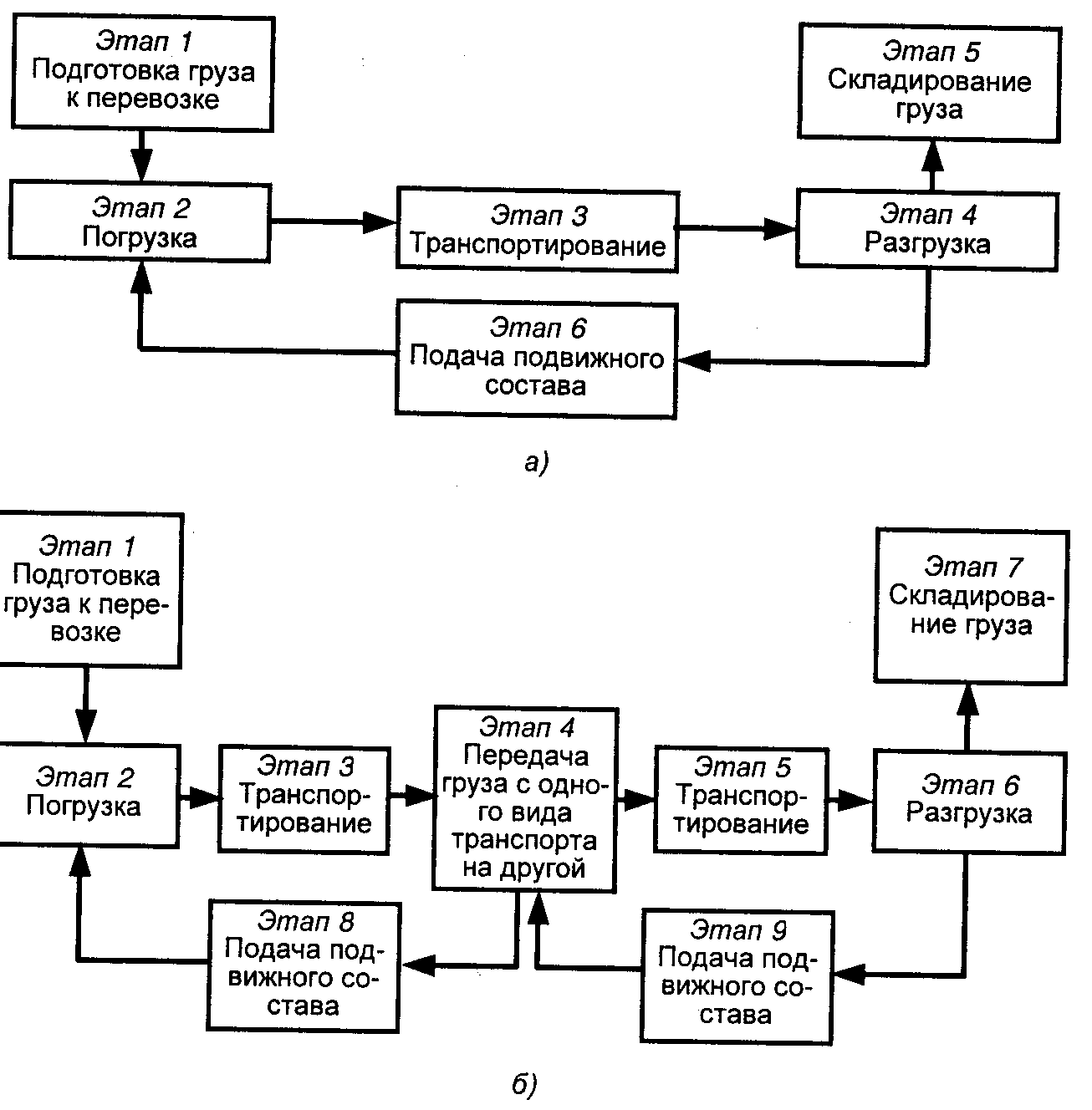
3.2. Technological schemes of cargo transportation processes
Cargo transportation process is of cyclic nature. This means that, with the exception of pipeline transport which presupposes unbreakable operation, cargo transportation is carried out in repeated productive cycles which follow one another. The rhythm of cycles is identified by their frequency. The frequency depends on average duration of an individual cycle.
A cycle of transportation process is characterized by high dynamics, unbreakable change of the state of process and change of the content of its elements. Cycles of individual processes of load transportation vary according to the time criterion. However, they all have a beginning and an end. Every repeated cycle of transportation is composed of many individual stages which are closely interconnected and share the same objectives. The final objective of these stages is achieving spatial dislocation of cargos. A complex of such cycles forms cargo transportation process.
Schemes of cargo transportation process show that every transportation process includes the stages concerning only cargo, stages referring to movable fleet and joint stages.

Joint stage is defined as the stage of loading, moving and unloading cargo. That is why various stages can be considered as joint, e.g. driving up of vehicles for loading, making up of cargo for transportation, storing of load as the point of production and in points of transshipment, etc. Such reality definitely complicates comprehension of the essence of cargo transportation process.
Correct organization of transportation process presumes:
Contraction of surplus time expenses for vehicle downtime during loading and unloading by way of: widening the range of loading-unloading operations and implementation of integrated mechanization; devise and strict follow of the driving up and operation schedules for trucks; construction of approach roads and sites for maneuvering of trucks, especially for trailer trucks and haulers with many trailers or semi-trailers; primary making up of cargo, etc.
Rational packing of cargo. Use of removable shields which enables to maximize capacity and occupancy utilization for movable fleet.
Correct laying of cargo in truck body which allows even distribution of load factor for vehicle chassis and optimizes operation for the driver.
Optimal modes of truck operation (road trains) at some sections en-route regarding the state of road pavement, traffic congestion and other operational factors. Drivers should be aware of the specifications and operational performance rules for vehicle brands during transportation of a specified type of load.
Cargo transportation should be carried out according to rationally devised routes focusing on shortest distances between origin/destination points, modes of movement at a given section of a route, maximum loading of the vehicles away and back.
Maximum utilization of working time based on acting legislation by way of condensation of working hours in team method of operation.
